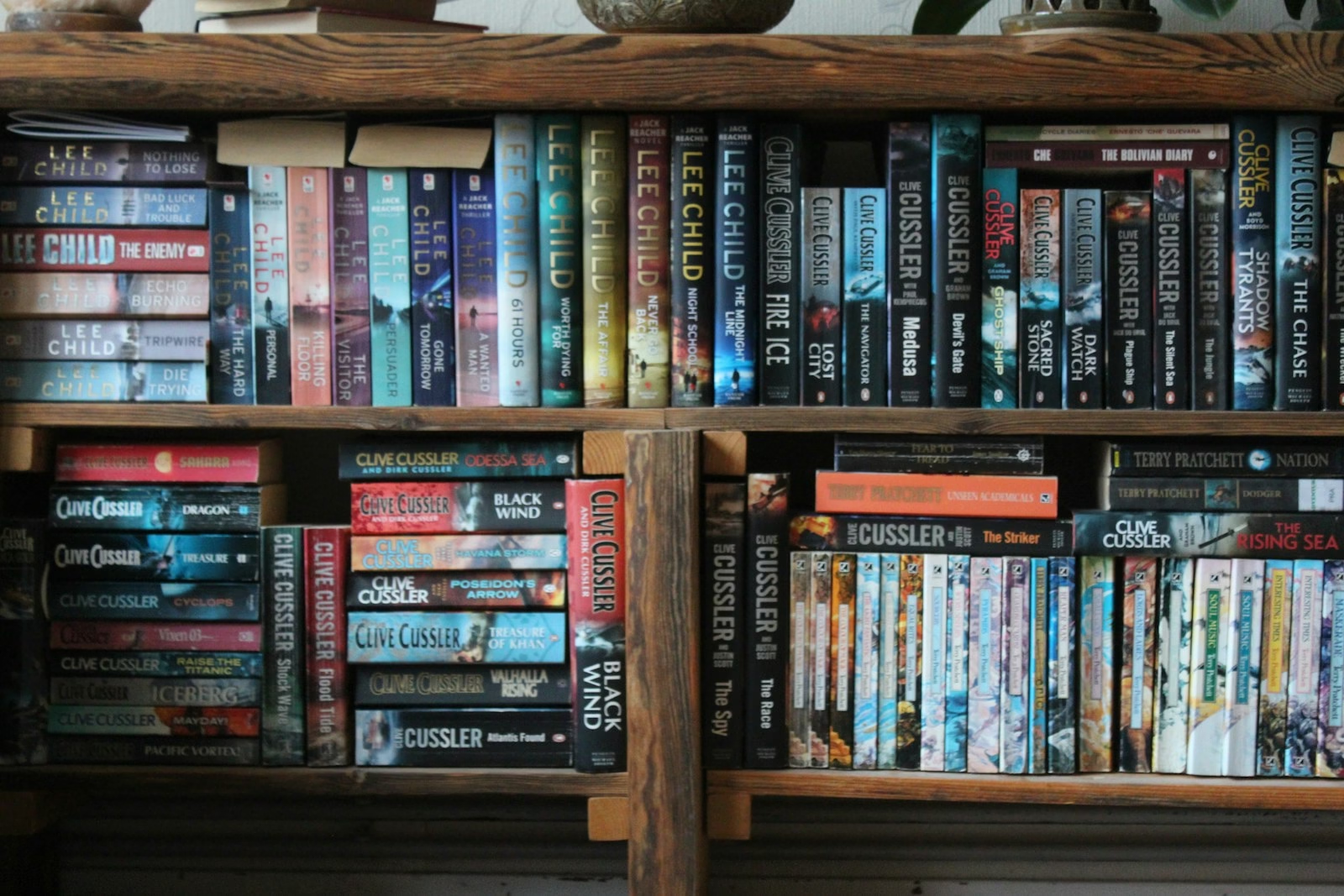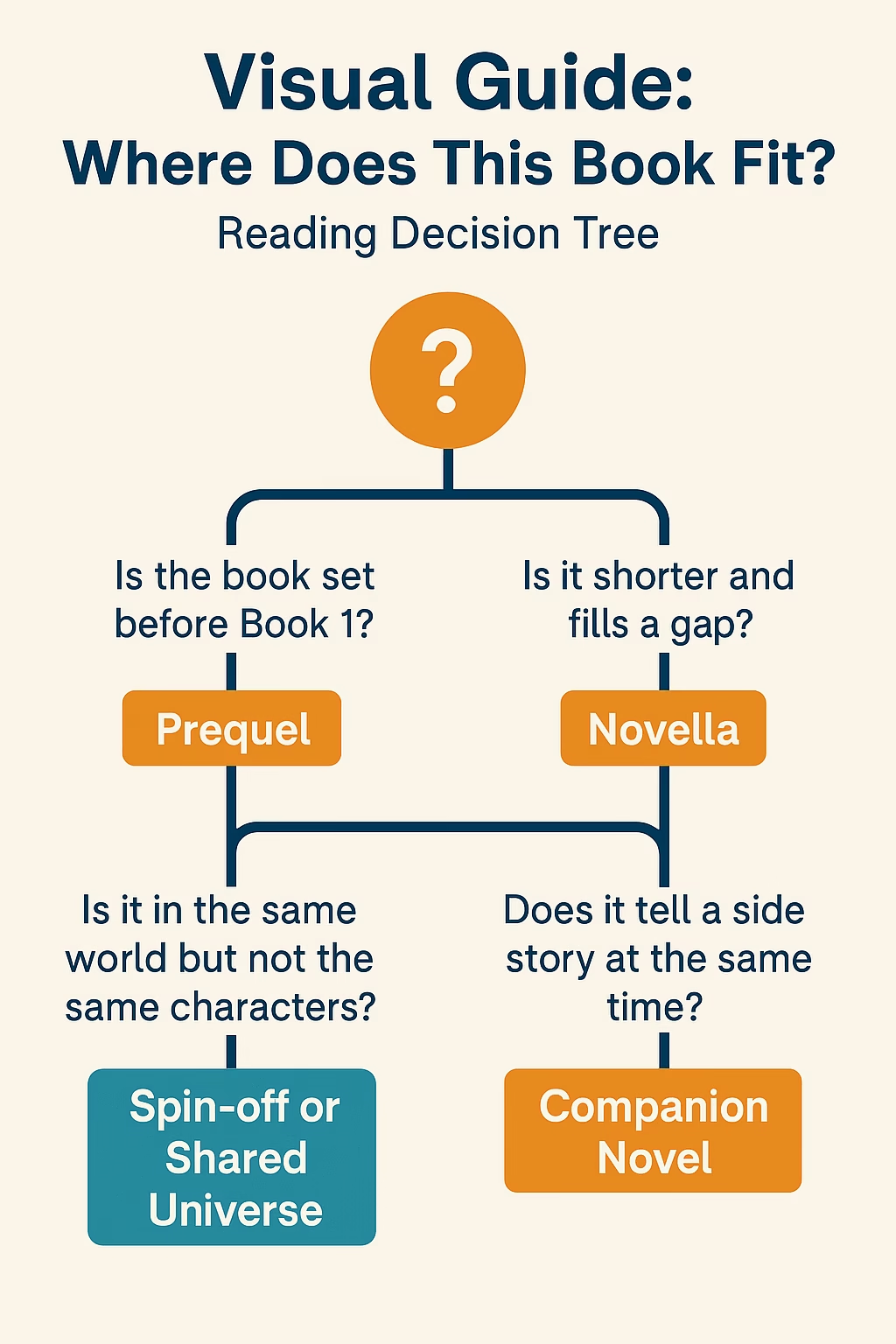Read every series in the right order

Book-Series Terminology Guide: Prequels, Spin-offs, Companion Novels & More
Table of Contents
Ever picked up a “Book 0.5” and wondered if it was essential or just optional backstory? Or gotten lost deciding whether a novel like The Fowl Twins counts as a prequel, sequel, or something else? You’re not alone.
From expanded universes to retroactive prequels, book-series terminology can be confusing—even for seasoned readers. This guide cuts through the clutter with plain-language definitions, real-world examples, and smart reading-order tips.
1. Quick Reference Table
| Term | Quick Definition |
|---|---|
| Series | A set of related books with connected plot, characters, or worldbuilding |
| Sequel | Continues the story after an earlier book |
| Prequel | Set before the events of a previously published book |
| Spin-off | Follows side characters or new plots from the main series |
| Companion Novel | Parallel narrative that enhances the core story but isn’t mandatory |
| Shared Universe | Different series sharing the same fictional world |
| Tie-in | Licensed media fiction based on games, films, or TV |
| Novella | Shorter work expanding the main storyline or world |
| Omnibus | A volume that collects multiple novels from a series |
| Anthology | A collection of short fiction, sometimes from multiple authors |
2. Deep-Dive Definitions (with Examples)
Series
A collection of books tied by ongoing plot, cast, or world. May follow a linear sequence or interlocking arcs.
Example: The Wheel of Time is a long-form epic best read in publication order for intended pacing.
Tip: Always check whether the series is linear (like Inspector Gamache) or flexible (like Discworld).
Sequel
A direct continuation of a prior book’s events.
Example: Crooked Kingdom is the sequel to Six of Crows.
Tip: Sequels nearly always depend on having read the previous title.
Prequel
Takes place before the first published book, often exploring origins or backstory.
Example: First King of Shannara is a prequel to the Original Shannara Trilogy.
Spoiler Risk: High. Prequels may assume knowledge of later events and should often be read last.
Spin-off
Centers on side characters or subplots from the main series.
Example: The Fowl Twins is a spin-off series that follows Artemis Fowl’s younger brothers.
Tip: Spin-offs offer new arcs but often include Easter eggs for long-time fans.
Companion Novel
A story that runs in parallel with the main plot, sometimes offering a new POV or filling narrative gaps.
Example: While not yet featured in our archive, companion formats appear in YA series like Twilight or can take form in dual-timeline fantasies.
Tip: Companion novels are great for deeper world immersion without derailing core plots.
Shared Universe
Different series written in the same setting, often with crossover events or overlapping history.
Example: The Expanse novellas and shorts extend the main universe.
Tip: Shared universes reward long-term reading but may not follow a single narrative arc.
Tie-in
Official books based on non-literary media like movies or games.
Example: While not covered in our archive yet, Star Wars books are the most common example.
Tip: Always check if the tie-in is considered canon.
Novella
Shorter than a novel, often focusing on a specific subplot or character arc.
Example: Many Sarah J. Maas stories, though not listed yet in our archive, use novellas to deepen romance or history.
Tip: Some novellas are essential (like in The Expanse); others are bonus content.
Omnibus
A bound volume of multiple related books—great for collectors and binge readers.
Example: Boxed sets of The Wrath and the Dawn Duology often come in an omnibus edition.
Anthology
A group of short stories, often from multiple authors and sometimes themed to a single world or character.
Example: We plan to include anthologies related to A Song of Ice and Fire and others as the archive expands.
3. Visual Guide: Where Does This Book Fit?
Reading Decision Tree
- Is the book set before Book 1? → Prequel
- Is it shorter and fills a gap? → Novella
- Is it in the same world but not the same characters? → Spin-off or Shared Universe
- Does it tell a side story at the same time? → Companion Novel

4. How These Terms Affect Reading Order
Understanding these distinctions can help avoid major reader pitfalls:
- Prequels often include spoilers. Read with caution.
- Novellas can explain gaps in motivation or worldbuilding.
- Omnibus editions may skip important stories like novellas or companion shorts.
For more, see our Publication vs. Chronological Order guide.
5. FAQs
Can a prequel also be a spin-off?
Yes. If it’s set earlier and follows a side character, it fits both categories.
What’s a “side-quel”?
A narrative that happens alongside the main events but shows a different POV.
Are companion novels canon?
Usually. But they often aren’t required to understand the main plot.
Are tie-ins low quality?
Not necessarily. Many expand and enhance beloved universes—just check their status.
Do I have to read novellas?
Only if you want full immersion. Some are optional; others, like in The Expanse, are essential.
Shared universe vs. spin-off—what’s the difference?
Spin-offs follow characters; shared universes share world rules or lore.
Conclusion & Next Steps
Still uncertain about reading order or story type? Bookmark this glossary for future reference, or share it with your book club. Educators and librarians are welcome to print and distribute this resource with credit.
Want more help? Start with our Book Series Glossary or browse popular collections like Inspector Gamache or Six of Crows.
Stay informed. Read smarter.







